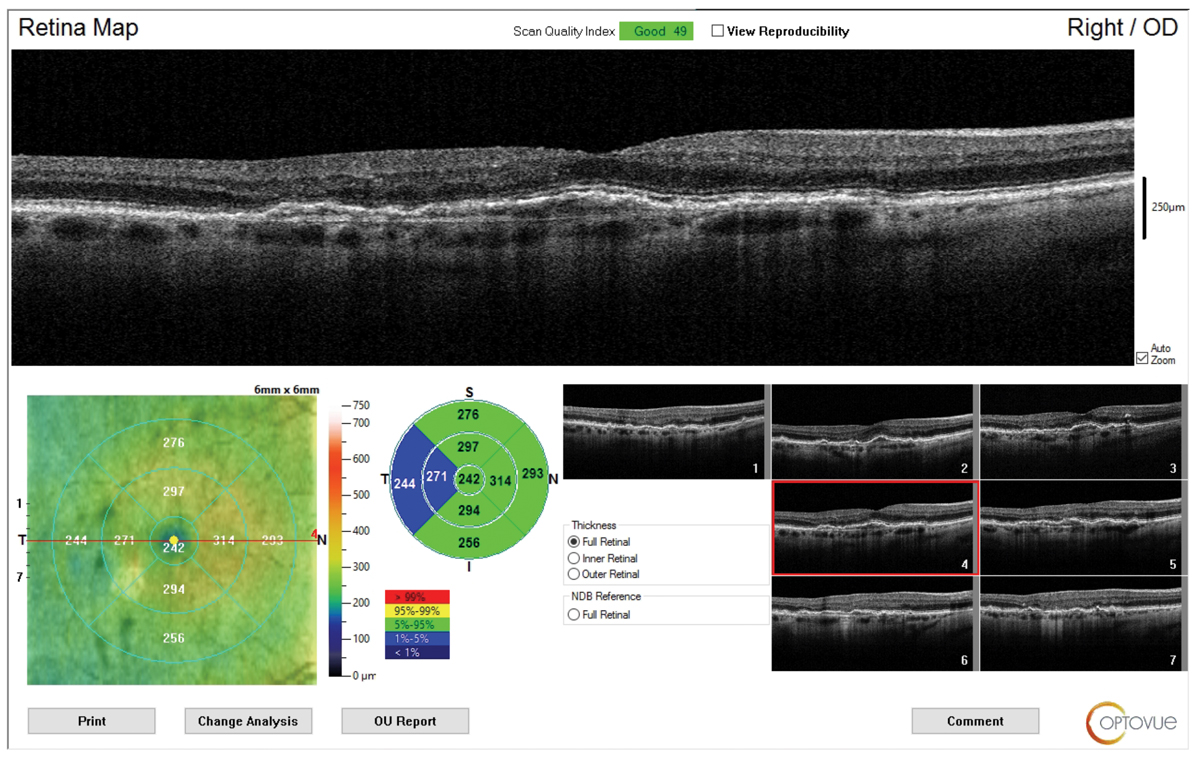 |
|
Look for the double-layer sign when monitoring AMD patients with intermediate disease. Photo: Eric Dillinger, OD. Click image to enlarge. |
When evaluating patients with a progressive eye disease like age-related macular degeneration (AMD), it’s crucial to remain aware of clinical signs that may indicate or anticipate potential advancement. A recent study found several biomarkers on OCT that may signal the conversion to exudative neovascular AMD in patients with intermediate-stage disease. The data demonstrated that exudation risk increased in the presence of any of the following factors: a thick double-layer sign, intraretinal hyperreflective foci or exudative macular neovascularization (MNV) in the fellow eye.
A total of 458 eyes of 458 patients with intermediate AMD and a minimum of 24 months of follow-up were included in the retrospective study (mean age: 74, 63.5% female). Various OCT biomarkers were assessed at baseline. The researchers then performed a binary logistic regression to investigate whether these initial OCT findings shared an association with the conversion to exudative MNV over the follow-up period.
By the end of two years, 18.1% of eyes with intermediate AMD had progressed to exudative MNV. The following odds ratios were determined for the three noted independent predictors of disease advancement: a thick double-layer sign (4.34), intraretinal hyperreflective foci (2.34) and fellow eye exudative MNV (1.69).
“Among the biomarkers, a thick double-layer sign was the strongest predictor, though it was only evident in 9.6% of cases at baseline,” the researchers pointed out in their paper. “A thin double-layer sign, however, was not a risk factor for exudative MNV.”
The researchers explained that it didn’t come as a surprise that late AMD in the fellow eye seemed to be a strong predictor of conversion to exudative MNV, as this association has already been demonstrated in the AREDS study.
They noted that over two years, the three OCT biomarkers outlined in this study appeared to each increase the risk of exudative AMD conversion in those with intermediate AMD.
Wakatsuki Y, Hirabayashi K, Yu HJ, et al. Optical coherence tomography biomarkers for conversion to exudative neovascular age-related macular degeneration. Am J Ophthalmol. October 10, 2022. [Epub ahead of print]. |

